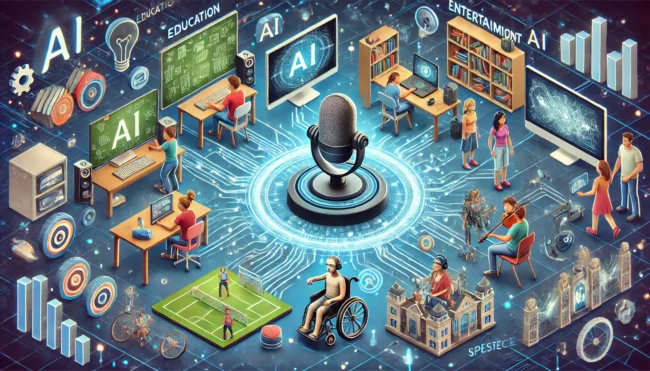Introduction
Artificial Intelligence (AI) has turned into a buzzword, but what exactly does it encompass? To understand AI, breaking it down into its types—Narrow AI, General AI, and Superintelligent AI—reveals its varying complexities and potential applications.
Narrow AI
Narrow AI, also known as Weak AI, is everywhere. It’s what you interact with when you speak to Siri or Alexa, see recommendations on Netflix, or experience automated customer service online. These systems are designed to perform a narrow task, usually very well, but they don’t possess general intelligence. They can’t switch tasks outside their programming.
For instance, imagine a chess-playing AI. It can defeat the best human players but wouldn’t know the first thing about making an omelet. This specialization is both Narrow AI’s strength and limitation.
Applications of Narrow AI
Narrow AI excels in environments where the rules are well-defined and there is a copious amount of data:
- Healthcare: Systems that analyze medical imagery to detect anomalies.
- Finance: Algorithms that predict stock movements or detect fraudulent transactions.
- Customer service: Chatbots for handling customer inquiries.
- Transportation: Self-driving cars operating under specific conditions.
Even though Narrow AI is highly competent in these areas, it cannot transcend its narrowly defined capabilities.
General AI
General AI, often referred to as Strong AI or AGI (Artificial General Intelligence), is the next frontier. Unlike Narrow AI, General AI aims to mimic the broad cognitive abilities of humans. In essence, a General AI system could learn anything a human does, like solving a math problem, composing music, or even understanding metaphors in literature.
The challenge? We’re not there yet. Achieving General AI requires breakthroughs in understanding how to replicate human reasoning, learning, and decision-making processes. While research in this area is robust, and promising, it is fraught with obstacles.
Characteristics of General AI
General AI would need to exhibit several key traits:
- Learning: Ability to learn and understand across diverse domains.
- Adaptability: Capable of transferring knowledge from one context to another.
- Problem-solving: Can tackle a wide array of problems, not just specific tasks.
- Emotional intelligence: Understanding and responding to emotional nuances.
The development trajectory for General AI is uncertain, but its potential impact is enormous.
Superintelligent AI
Take a leap further, and you arrive at Superintelligent AI. This form of AI surpasses human intelligence in every possible domain — creativity, problem-solving, social nuances, you name it. Nick Bostrom’s “Superintelligence” delves into the complexities and risks of this kind of AI.
Superintelligent AI is still science fiction, yet it’s a topic of serious academic debate. The primary concern is control. Once a system reaches this intelligence level, would it act in alignment with human goals? The hypothetical risks have ethical, philosophical, and existential implications.
Potential Risks of Superintelligent AI
Running simulations of how a Superintelligent AI might behave brings up numerous issues:
- Autonomy: An AI making decisions without human oversight could diverge dangerously from human intentions.
- Ethics: The AI’s value system may not align with human values.
- Power: Controlling a superintelligent system could shift power dynamics drastically, potentially concentrating immense power in few hands.
The path to Superintelligent AI involves speculative challenges. Many experts suggest that solving the alignment problem—making sure an AI’s objectives align with ours—is crucial before even approaching this level.
Current State and Future Directions
We’re firmly in the era of Narrow AI, with tantalizing hints of General AI appearing on the horizon. Yet, the leap to Superintelligent AI is less about incremental technological improvements and more about paradigmatic shifts in understanding intelligence.
Research and Development
Institutes like OpenAI, DeepMind, and various academic institutions are pushing boundaries. Their work revolves around machine learning, neural networks, and cognitive computing.
Ethics and Governance
Discussions around AI are incomplete without touching upon ethics and governance. As AI systems grow more advanced, establishing robust frameworks for accountability, transparency, and ethical considerations becomes imperative.
Conclusion
Understanding AI’s different types helps to demystify its capabilities and limitations. Narrow AI is already making tangible impacts in specialized areas, setting the stage for broader ambitions. General AI remains an aspirational goal, promising to unlock unprecedented possibilities and challenges alike. Superintelligent AI, while speculative, raises important questions that we must consider today, even if its realization is far off.
In any case, the journey through these stages of AI is bound to be one of the most compelling narratives of our time, offering both opportunities for progress and points for caution. The better we understand these distinctions, the more equipped we are to navigate the future.

